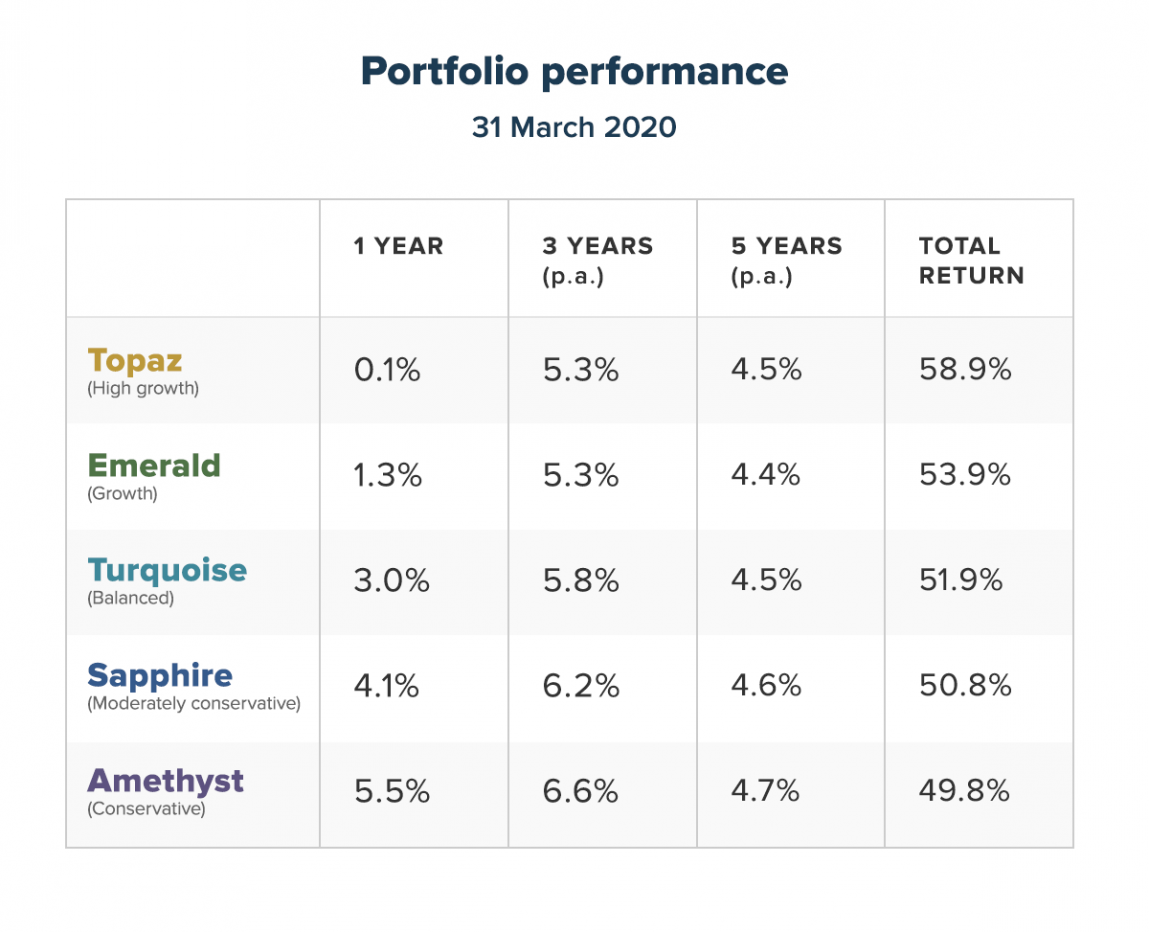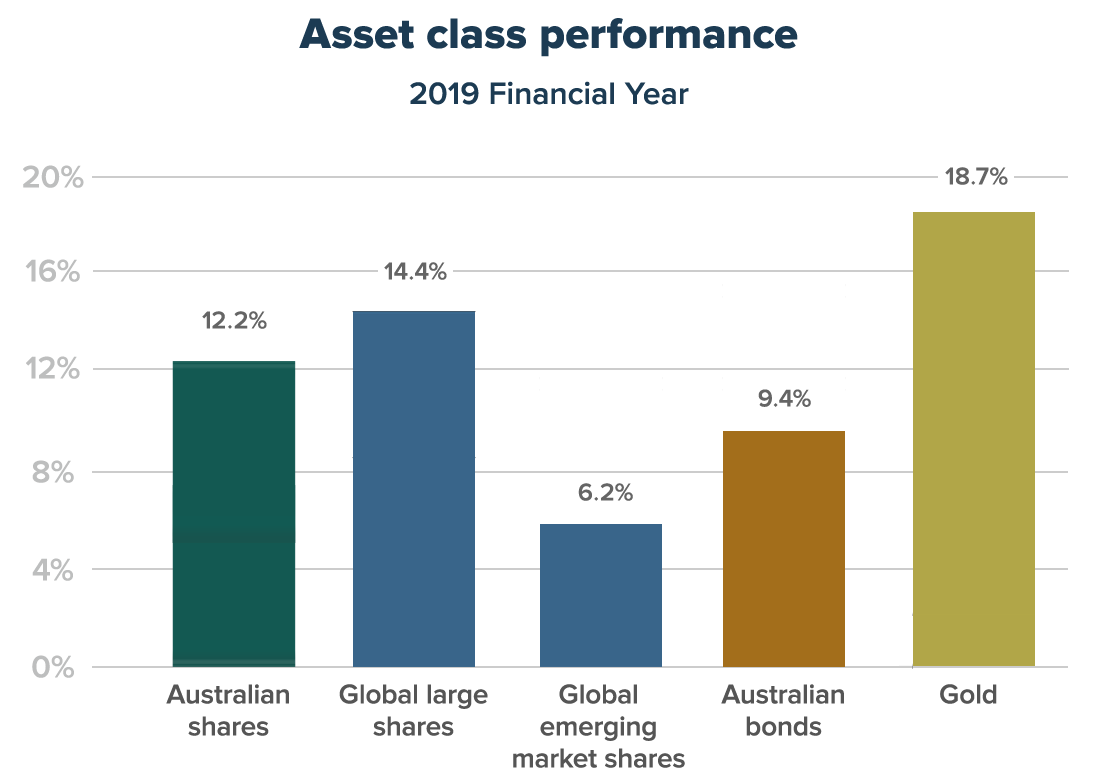The first quarter of 2020 has been a historic one for the world and financial markets.
The rapid spread of COVID-19 and resulting lockdowns around the world initially sent share markets spiralling downwards by as much as 34%. We discussed a historical perspective on this rapid market fall in What coronavirus means for your portfolio. The policy response by governments and central banks across the globe have since helped markets stabilise and some share prices rebound.
The markets are reevaluating the impact of this virus in real-time. New information on fatalities, job losses, consumer confidence and spending, inflation, earnings, dividends and other factors are leading to large moves in share prices. Because there are still so many unknowns it’s likely that market volatility will remain high for some time even if we have now passed ‘peak panic’.
This pandemic has shown once again that trying to time your entry and exit points into markets is notoriously difficult.
That’s why our advice continues to be to stay invested and ride out the market bumps with a well diversified portfolio. Over many market crises, staying invested has been a more profitable and repeatable strategy than moving to cash until the volatility passes.
Stockspot portfolio performance
The Stockspot portfolios provided a significant level of protection from share market falls, as they’ve been designed to do.
While the Australian share market fell by 20% over the first quarter (and some individual shares by much more), the Stockspot portfolios lost between 2.1% to 9.7%.
To only be down 2.1% to 9.7% after the most rapid share market correction since 1987 is something we are extremely proud of, particularly after delivering positive returns of 13.9% to 19.9% in 2019.
Stockspot’s defensive assets shine
Our allocation to both Australian government bonds and gold helped to offset some of the share market losses. Government bonds increased by 2.3% for the quarter and gold rose by 20.2%. Our decision to increase the gold allocation in November 2017 has helped during this period since government bonds haven’t provided the same level of protection they would have in the past.
Over the 12 months to 31 March 2020 gold has risen by 43%.
Given gold’s target weight of 12.3% in each of Stockspot’s portfolios, this has contributed to 5% better performance than if we didn’t own gold.
Assets like property and infrastructure fell by as much (or more) than Australian shares during this correction. We recently wrote about the impact this could have on members of some large super funds.
In our view a defensive asset is one that you can liquidate easily in a stressed environment.
It has always struck us as very wrong that funds can classify infrastructure and property as defensive. We recently discussed this issue with Charlotte Grieve from The Age.
Performance relative to other funds
The Stockspot portfolios continue to have positive returns on a rolling 12 month basis which is better than 99% of similar managed diversified funds. Our 5 portfolios have outperformed 464 of 469 similar diversified funds tracked by Morningstar. Stockspot portfolios also continue to outshine 99% of similar funds over 3 and 5 years as they did when we did a detailed comparison in September 2019.
Source: Stockspot, Morningstar website comparison group of investment funds across growth, balanced and moderate multi-sector categories to 31 March 2020. Stockspot Amethyst, Turquoise and Topaz portfolios
How to invest in volatile markets
This quarter has shown the value of staying diversified and disciplined with your investment strategy regardless of what markets throw at you.
Stay diversified including defensive assets
We own a wide mix of different investments to give you exposure to different sectors, countries and asset classes. This helps to smooth the bumps and keep you invested throughout the inevitable ups and downs like we’ve seen.
A mix of growth assets like shares as well as defensive assets like bonds and gold is important. It also means you have many sources of returns. This chart shows where returns have come from over the past 5 years.
Graph may not sum up to 100 due to roundingLet Stockspot automate your rebalancing to take advantage of market dips
This quarter gave us the rare opportunity to ‘rebalance’ some client portfolios to get them back towards their target investment mix. To do this we’ve generally been selling some gold and buying some Australian shares. We explained the process in detail in Why we’re rebalancing some portfolios now.
It may seem counterintuitive to be selling gold and investing the proceeds into shares during a period of market turmoil. Rest assured that this is exactly what should be happening in order to get your portfolio risk back to its target risk level and take advantage of the low prices.
We know It’s hard to sell things that have done well because it involves going against the crowd. Automated rebalancing removes emotion and helps you to buy investments when they’re low and sell when they’re high. It’s one of the big advantages of using an automated wealth service like Stockspot rather than investing yourself.
Don’t try and time when to be in and out
It may seem sensible to exit markets and move to cash after seeing the Australian share market fall by 34% in a matter of weeks. At least until things settle down. While it might make you more comfortable in the short term, moving to cash can be an expensive mistake over the long term. Markets do recover so moving to cash for an extended period is likely to put you in a worse position. We considered a few different scenarios in The cost of moving to cash.
The first quarter of 2020 has been a difficult one for many Australian families and workers
Stockspot understands how important it is for us to be available to speak to and answer any questions during these volatile times.
Our Client Care & Advice team remains on hand to support you via phone, email and live chat and is ready to respond to your queries during business hours. Don’t hesitate to reach out if you have any questions and we will respond as soon as possible.
Our Operations team continues to invest for clients, process deposits, withdrawals and open new accounts.
This quarter has been our largest quarter on record of new deposits which shows that most clients see this as an opportunity to add to their long-term investments.
We hope you and your families stay safe and healthy during this difficult time.
The financial year ending 30 June 2019 was a tale of two halves.
Share markets had a poor first half of the financial year (to Dec 2018). There were a variety of reasons for investors to be nervous, including Trump’s trade war with China, US interest rates on the rise, the Brexit debacle in the Euro zone and China’s slowing growth.
We reminded clients at the end of the year to stay the course, ignore news headlines and not let short term stock market movements or market forecasters impact your investment decisions.
Six months on, many of those same investor concerns remain unresolved. The trade war continues, Chinese growth is at its lowest levels in 30 years and Brexit remains incomplete.
The only meaningful change in the market narrative has been the prospect of lower interest rates around the globe – which very few predicted at the start of the year. Meanwhile global share markets, bond markets and gold are all significantly higher.
Asset class returns
The 2018/19 financial year proved once again that staying the course in a diversified portfolio of low cost ETFs is your best course of action as a long term investor.
Gold reached an all time high in Australian dollars, delivering a return of 18.7% for the financial year. Investors have been favouring gold on the back of falling global bond yields, which we discussed in our article in The Australian newspaper. Gold has been the best performing asset in our portfolios since we increased the allocation from 10% to 12.3% in November 2017.
The other defensive asset in our portfolios, Australian bonds, cushioned share market falls and also increased on the back of lower interest rates, finishing the financial year up 9.4%.
Australian shares had a stellar finish to the financial year closing up 12.2%. Global large shares (+14.4%) outperformed their emerging market peers (+6.2%).

Portfolio returns
The Stockspot portfolios delivered exceptional returns of between 10.5% to 11.4% for the financial year (2018/19). By investing in low-cost index funds our clients accessed more of the market return and paid less in fees away to fund managers.
| 1 year | 3 years (p.a.) | 5 years (p.a.) | Total return | |
| Topaz (Aggressive growth) | 11.4% | 11.5% | 9.2% | 67.4% |
| Emerald (Growth) | 11.2% | 9.8% | 8.2% | 58.1% |
| Turquoise (Balanced) | 11.0% | 8.8% | 7.7% | 53.8% |
| Sapphire (Moderately conservative) | 10.8% | 8.2% | 7.3% | 51.3% |
| Amethyst (Conservative) | 10.5% | 7.2% | 6.8% | 47.5% |
Combining ETFs in the right proportions has meant our strategies have only taken half the risk of a portfolio holding just Australian shares.
We recently discussed why the Stockspot portfolios continue to have more defensive assets than you may expect. This strategy certainly hasn’t detracted from returns.
Find out how Stockspot makes it easy to grow your wealth and invest in your future.







